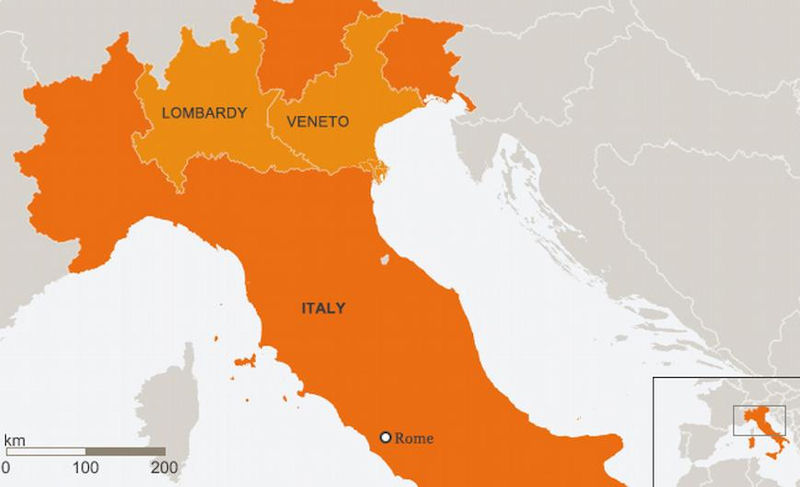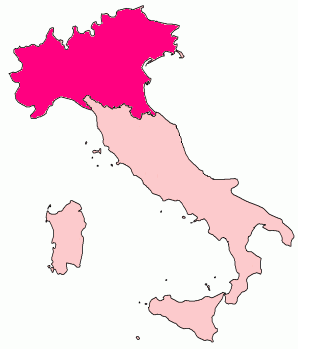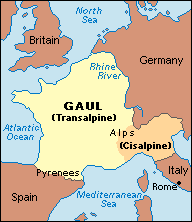Install the app
How to install the app on iOS
Follow along with the video below to see how to install our site as a web app on your home screen.

Note: This feature currently requires accessing the site using the built-in Safari browser.
You are using an out of date browser. It may not display this or other websites correctly.
You should upgrade or use an alternative browser.
You should upgrade or use an alternative browser.
Keltoi Map (Map of Celtic Nations)
- Thread starter Ziober
- Start date
Ygorcs
Active member
- Messages
- 2,259
- Reaction score
- 812
- Points
- 0
- Ethnic group
- Multiracial Brazilian
I don't think it's very justifiable (based on archaeology, ancient documents, genetics and so on) to color the entire territory of Turkey, Romania, Bulgaria and Serbia. Granted that Celtic peoples did invade and settle those regions, but they were a small minority and only really made a lasting impact as the Galatians in Turkey, who only occupied a small part of that country's territory.
Also, in Italy the strong Celtic settlement and acculturation didn't go much further than North Italy, mostly Padania, while the rest was peopled by unrelated peoples (Etruscans) or only "cousins" of them, like the Italics and possibly the Sicels, Ligurians (probably Para-Celtic) and Messapians. There isn't also a lot of Celtic presence in Sweden and Denmark, those were the core of Germanic peoples.
On the other hand, I am not really sure, but I think there was Celtic settlement in Poland and Slovakia, wasn't there?
Also, in Italy the strong Celtic settlement and acculturation didn't go much further than North Italy, mostly Padania, while the rest was peopled by unrelated peoples (Etruscans) or only "cousins" of them, like the Italics and possibly the Sicels, Ligurians (probably Para-Celtic) and Messapians. There isn't also a lot of Celtic presence in Sweden and Denmark, those were the core of Germanic peoples.
On the other hand, I am not really sure, but I think there was Celtic settlement in Poland and Slovakia, wasn't there?
Angela
Elite member
- Messages
- 21,823
- Reaction score
- 12,329
- Points
- 113
- Ethnic group
- Italian
^^It's better not to rely on memory.
The linguistic division in Italy between what used to be called the Gallo-Italian languages and the rest mirrors the line of invasion and settlement and also the genetics. The line passes just south of La Spezia and goes to near Rimini. Certain linguists call it the Massa/Senigalia line. GALIA, yes? The Lunigiana, although politically part of Tuscany for a few hundred years, speaks an Emilian dialect, and so is mainly cut off by that line although it's a bit more complicated than that.
Anyway, all of this is based on language. Celtic speakers in Britain were not like the Celtic speakers in Spain or anywhere else.

Y dna inheritance also correlates with the above.

The linguistic division in Italy between what used to be called the Gallo-Italian languages and the rest mirrors the line of invasion and settlement and also the genetics. The line passes just south of La Spezia and goes to near Rimini. Certain linguists call it the Massa/Senigalia line. GALIA, yes? The Lunigiana, although politically part of Tuscany for a few hundred years, speaks an Emilian dialect, and so is mainly cut off by that line although it's a bit more complicated than that.
Anyway, all of this is based on language. Celtic speakers in Britain were not like the Celtic speakers in Spain or anywhere else.

Y dna inheritance also correlates with the above.

Dretsend
Junior Member
I'd swear that is the line of Cisalpine Gaul...
LeBrok
Elite member
- Messages
- 10,261
- Reaction score
- 1,617
- Points
- 0
- Location
- Calgary
- Ethnic group
- Citizen of the world
- Y-DNA haplogroup
- R1b Z2109
- mtDNA haplogroup
- H1c
South Poland and Slovakia too.I don't think it's very justifiable (based on archaeology, ancient documents, genetics and so on) to color the entire territory of Turkey, Romania, Bulgaria and Serbia. Granted that Celtic peoples did invade and settle those regions, but they were a small minority and only really made a lasting impact as the Galatians in Turkey, who only occupied a small part of that country's territory.
Also, in Italy the strong Celtic settlement and acculturation didn't go much further than North Italy, mostly Padania, while the rest was peopled by unrelated peoples (Etruscans) or only "cousins" of them, like the Italics and possibly the Sicels, Ligurians (probably Para-Celtic) and Messapians. There isn't also a lot of Celtic presence in Sweden and Denmark, those were the core of Germanic peoples.
On the other hand, I am not really sure, but I think there was Celtic settlement in Poland and Slovakia, wasn't there?
Angela
Elite member
- Messages
- 21,823
- Reaction score
- 12,329
- Points
- 113
- Ethnic group
- Italian
I'd swear that is the line of Cisalpine Gaul...
I was responding to the following, which never mentioned Cisalpine Gaul, and specifically excluded the Ligurians:
"Also, in Italy the strong Celtic settlement and acculturation didn't go much further than North Italy, mostly Padania, while the rest was peopled by unrelated peoples (Etruscans) or only "cousins" of them, like the Italics and possibly the Sicels, Ligurians (probably Para-Celtic) and Messapians."
This is the original Padania as proposed by the Northern League:

Then it became this, which except for the exclusion of northwest Tuscany (the handle of the Fiorentina steak) matches the linguistics pretty well:

Then when they realized that at least 50% and probably more of what they gave to the world came from Toscana, they added it and it became this:
:origin()/pre00/2b66/th/pre/i/2015/114/a/a/italian_dissolution_by_iori_komei-d5h5k8p.png)
Now they say all they want is to keep more of their taxes. Whatever.
This is Cisalpine Gaul as the Romans understood it, I think, and it would include not only Liguria (the inhabitants weren't called "Celt-Ligurians" for nothing, but also part of present day France (at least Nizza and Monaco). Italia Irredenta as my father would have said.

Roman administrative divisions were different and based on defensible landmarks to a large extent.
I wasn't objecting to the content of Ygorcs thread, merely trying to clarify it. He's a good poster, but I don't think anyone else here has spent most of his live studying Italian history and pre-history.
For those who don't know, the Rubicon River which Julius Caesar crossed to get into Italy was somewhere near Rimini.
"During the Roman republic, the river Rubicon marked the boundary between the Roman province of Cisalpine Gaul to the north-west and Italy proper (controlled directly by Rome and its allies) to the south. On the north-western side, the border was marked by the river Arno, a much wider and more important waterway, which flows westward from the Apennine Mountains (its source is not far from Rubicon's source) into the Tyrrhenian Sea."
So, "Italia" at the time did not extend north past the area around Firenze. Hence, this has always been part of my husband's arsenal for "proving" that he is more "Italian" than I am.
However, that was a bit of an artificial border as there was some Celtic settlement south of it.
So, the "Celtic" areas of Italy, if we exclude the Sicels, Messapians, and some part of Toscana, did, you are right, match pretty well with Cisalpine Gaul.
All it really means is that Celtic speaking or "para-Celtic" speaking people migrated there and mixed with the "locals", which is also what happened in Spain.
Ygorcs
Active member
- Messages
- 2,259
- Reaction score
- 812
- Points
- 0
- Ethnic group
- Multiracial Brazilian
I wasn't objecting to the content of Ygorcs thread, merely trying to clarify it. He's a good poster, but I don't think anyone else here has spent most of his live studying Italian history and pre-history.
No problem, Angela. I understood your aim. I thought your two posts were an excellent complement and clarification to what I meant in my post. As you say, yes, the fact that Ligurians were often called Celto-Ligurians, and the few inscriptions in Ligurian as well, do indicate that they were at least a related people. A priori I think they were just the resisting remnants of the first Proto-Celtic expansions before the linguistic and cultural "homogeneization" that the Hallstatt and especially the La Tène expansion probably triggered in Western/Central Europe.
As for your clarification about the stricter meaning of "Padania" (and its smaller, more specific territory), I confess that when I wrote my message I was under the influence of that "broader" definition of Padania, basically covering all northern Italy, promoted by the separatists (we also have these types in São Paulo and Southern Brazil, they insist they are a "different society and culture", but press them a little bit and you soon find out all they want is to pay less taxes and to stop helping less developed regions, and it would also help if they could finally see fewer "inconvenient" black and Amerindian faces, you know...).
Angela
Elite member
- Messages
- 21,823
- Reaction score
- 12,329
- Points
- 113
- Ethnic group
- Italian
No problem, Angela. I understood your aim. I thought your two posts were an excellent complement and clarification to what I meant in my post. As you say, yes, the fact that Ligurians were often called Celto-Ligurians, and the few inscriptions in Ligurian as well, do indicate that they were at least a related people. A priori I think they were just the resisting remnants of the first Proto-Celtic expansions before the linguistic and cultural "homogeneization" that the Hallstatt and especially the La Tène expansion probably triggered in Western/Central Europe.
As for your clarification about the stricter meaning of "Padania" (and its smaller, more specific territory), I confess that when I wrote my message I was under the influence of that "broader" definition of Padania, basically covering all northern Italy, promoted by the separatists (we also have these types in São Paulo and Southern Brazil, they insist they are a "different society and culture", but press them a little bit and you soon find out all they want is to pay less taxes and to stop helping less developed regions, and it would also help if they could finally see fewer "inconvenient" black and Amerindian faces, you know...).
That's exactly how I see it too.
As for the second paragraph, I do indeed know.
Ziober
Regular Member
- Messages
- 539
- Reaction score
- 45
- Points
- 28
- Ethnic group
- Celtiberian
This is the Europe map, view from the Center of the Earth, standing in East direction and looking upis the map ok with Horizon?
it is difficult to realize,
Last edited:
Taranis
Elite member
1) Why is the map horizontally flipped and turned by 90 degrees?
2) As the others have said (approximately):
- only the north of Italy had a Celtic presence (you fixed that in the second map)
- the northeast of Germany had no Celtic presence either (you fixed that in the second map).
- In disagreement with Yorgcs, I would actually say that Slovenia, (western) Hungary and (parts of) Serbia are justified if we include inner Anatolia. Belgrade for one (Singidunum) was originally a Celtic city.
- with Anatolia, as others pointed out, only the region around Ankara was settled by the Galatians.
- as LeBrok said, there was Celtic presence in southern Poland and Slovakia (Puchov culture, Cotini), and you already fixed this in the second map.
Additionally there's a few other points:
- Unless you count the Cimbri (which may or may not have been Celtic, but more likely Germanic?), there never was a Celtic presence on the Jutland peninsula.
- Other than Gaelic/Pictish slaves in the Viking period, Norway never had a Celtic presence.
- I do not think much of Romania and Bulgaria can be included (by place names, anways). Downstream from approximately the Iron Gates gorge, the lands along the Danube were Dacian, not Celtic. The only area where there were Celtic settlements are those near the Danube delta.
- You should exclude the south and the Mediterranean seaboard of Spain. You mostly fixed this on the second map, but to my knowledge there was no Celtic settlements in the Cadiz, Malaga, Granada and Almeria provinces. I'm also certain that Jaen was not Celtic, either.
2) As the others have said (approximately):
- only the north of Italy had a Celtic presence (you fixed that in the second map)
- the northeast of Germany had no Celtic presence either (you fixed that in the second map).
- In disagreement with Yorgcs, I would actually say that Slovenia, (western) Hungary and (parts of) Serbia are justified if we include inner Anatolia. Belgrade for one (Singidunum) was originally a Celtic city.
- with Anatolia, as others pointed out, only the region around Ankara was settled by the Galatians.
- as LeBrok said, there was Celtic presence in southern Poland and Slovakia (Puchov culture, Cotini), and you already fixed this in the second map.
Additionally there's a few other points:
- Unless you count the Cimbri (which may or may not have been Celtic, but more likely Germanic?), there never was a Celtic presence on the Jutland peninsula.
- Other than Gaelic/Pictish slaves in the Viking period, Norway never had a Celtic presence.
- I do not think much of Romania and Bulgaria can be included (by place names, anways). Downstream from approximately the Iron Gates gorge, the lands along the Danube were Dacian, not Celtic. The only area where there were Celtic settlements are those near the Danube delta.
- You should exclude the south and the Mediterranean seaboard of Spain. You mostly fixed this on the second map, but to my knowledge there was no Celtic settlements in the Cadiz, Malaga, Granada and Almeria provinces. I'm also certain that Jaen was not Celtic, either.
Still wrong, All the Eastern coast of Iberia was inhabited by non Indoeuropeans (Iberians), as far west as Huelva and the rest of Andalusia (Turdetans), only the central part and Portugal+Galicia were celtiberians, you're also forgetting about the Basque in Northen Iberia and Aquitani in Southwest France, both also pre Indoeuropeans
bicicleur 2
Regular Member
- Messages
- 6,367
- Reaction score
- 1,402
- Points
- 113
you have to make the map in 2 colours, because there are 2 Celtic branches : a British/Atlantic, probably with Atlantic Bronze Age colonies and a Continental with Halstatt and La Tene Celts
to make matters more complicated, some La Tene Celts ended up invading the British Isles before the conquest of Gaul by Julius Caesar
to make matters more complicated, some La Tene Celts ended up invading the British Isles before the conquest of Gaul by Julius Caesar
AdeoF
Regular Member
- Messages
- 252
- Reaction score
- 28
- Points
- 0
- Location
- London - England
- Ethnic group
- Spanish
- Y-DNA haplogroup
- R-L21 (R-DF13)
- mtDNA haplogroup
- H1 (H1h1) or (H1e1)
If you really think about all of this. The celts has got a long and complicated history, there's even so many different clans of celts, who knows which one we are talking about. Since the celts where moving around Europe who knows how many settled down there. I think the map Ziober created was to show where the celts where around Europe and Anatolia but not all of them really settled in those places. There's really not much celt dna in most of those places only in a few.
Oh yeah Ziober where is Iceland. They got celt dna thanks to some bad business you can say from the vikings.
Oh yeah Ziober where is Iceland. They got celt dna thanks to some bad business you can say from the vikings.
Sile
Banned
- Messages
- 5,110
- Reaction score
- 582
- Points
- 0
- Location
- Australia
- Ethnic group
- North Alpine Italian
- Y-DNA haplogroup
- T1a2 -Z19945..Jura
- mtDNA haplogroup
- H95a1 ..Pannoni
celts in Poland
https://balkancelts.wordpress.com/2013/02/09/the-celts-in-poland/
eventually cut off from celts in central germany by the dacian decimation of the Boii in modern czech .....as per strabo book 7, chapter 5
https://balkancelts.wordpress.com/2013/02/09/the-celts-in-poland/
eventually cut off from celts in central germany by the dacian decimation of the Boii in modern czech .....as per strabo book 7, chapter 5
Ygorcs
Active member
- Messages
- 2,259
- Reaction score
- 812
- Points
- 0
- Ethnic group
- Multiracial Brazilian
Just a small clarification: I didn't say in my first post that Slovenia and Hungary should be excluded from the map, but only most of Romania, Bulgaria, Serbia and Turkey because only parts of them received Celtic settlement. However, I wasn't aware of Celtic cities in Serbia right in Belgrade. Very interesting observation!In disagreement with Yorgcs, I would actually say that Slovenia, (western) Hungary and (parts of) Serbia are justified if we include inner Anatolia. Belgrade for one (Singidunum) was originally a Celtic city.
zanipolo
Banned
- Messages
- 2,071
- Reaction score
- 65
- Points
- 0
- Ethnic group
- Down Under
- Y-DNA haplogroup
- T1a2 - Z19945
- mtDNA haplogroup
- K1a4o
You need to include Slovenia , Hungaria and Serbia on the map.
This thread has been viewed 80352 times.



